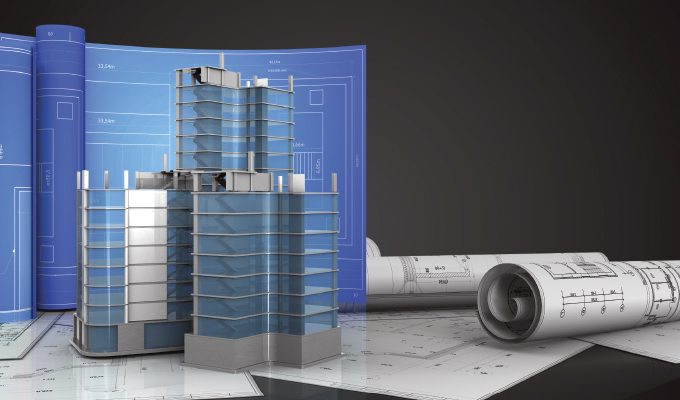Construction Technology (ConTech) adoption and investment has been on a steady rise within the industry. While it has led to safer jobsites, it has yet to translate into more cost-effective projects. To understand why, we need to look at how projects adopt the newest technology, how it helps improve individual task productivity, and where it falls flat for overall cost-effectiveness.
USING MORE TECHNOLOGY
The BuiltWorlds Benchmarking Program 2021-2022 (members only report), a survey of general contractors, engineers, and specialty contractors across building types and size, found that 93% of respondents use project management software on at least one project. Similarly, Heather Hinojosa at Hexagon found in a yet-to-be-published survey that “84% of [firms] are using autonomy or automation in some way in their operations.” This is near universal adoption of ConTech for projects.
INCREMENTAL GAINS
With this adoption, there are three key, proven technologies during the design and construction phases that modern contractors should adopt for safer or more cost-effective projects: Building Information Models, 360° Photos and Videos, and LiDAR Point Clouds.
During design, contractors can adopt Building Information Models (BIMs) to improve onsite safety and productivity. BIMs allow for virtual design of a building, and adoption is growing: 79% of US projects used BIMs in 2015 (2017 study by Gerges et at), and 100% of large-size architectural firms use BIMs (2022 AIA Firm Survey Report). BIMs allow for more careful, detailed planning and coordination before a project breaks ground, improving on-site safety and reducing mistakes, one of the biggest drivers of cost overruns for any project.
Once a project has broken ground, contractors can adopt 360° photos and videos to improve onsite safety. This process is simple: someone walks the site with a 360° camera and those photos become available for viewing in the cloud in the office, at home, or elsewhere. The simplicity explains the high level of adoption of 360° photos. 80% of 2022 Built Worlds survey participants (members only report) used 360° photos on at least one project. The ability to view a project without walking the site reduces the amount of people onsite, meaning fewer potential work-related incidents and more remote opportunities to identify and correct more potential safety risks. Unfortunately, there is little-to-no research to prove that 360° photos or videos alone lead to improved productivity—these tools facilitate conversations that already happen in the field and would happen without the use of the tool.
Point Clouds from a LiDAR scanner can improve productivity by catching mistakes before they become too costly (i.e., quality control). To find mistakes, a project team scans an area of their project, loads the point cloud into software on a computer, and analyzes the point cloud to detect issues. This workflow has lower adoption, 48% of BuiltWorlds 2022 survey respondents (members only report), despite its clear ROI and proven cost-effectiveness. Barriers to adoption are the large upfront capital investment, high skill and specialization to operate, and labor time required to do the work. A skilled VDC team can identify when walls aren’t plumb, concrete isn’t flat, or if contractors made installation mistakes without having to inspect the site in detail. Remote QA enabled by LiDAR leads to both more cost-efficient and safer projects.
PRODUCTIVITY IS WORSE
Despite this adoption and growing VC investment (a BuiltWorlds 2022 Venture Report (members only report) found that VCs invested $3.68B into ConstructionTech in 2022, up 10.89% over 2021 and 327.29% over 2020), Construction Labor Productivity in the United States has remained stagnant or gotten worse since the 1950s.
Economists Austan Goolsbee and Chad Syverson studied the issue and concluded in a paper published in National Bureau of Economic Research (NBER) that “the [construction] productivity struggle is not just a figment of the data. It is real.” There are similar insights by economist and former Bloomberg Opinion columnist Noah Smith and McKinsey.
So, if each BIM, 360° Photos, and Point Clouds (amongst others) lead to increased safety or onsite productivity, why doesn’t it show in the labor productivity data?
Currently, each technology increases the efficiency of a task (e.g., BIMs improve planning and coordination). But they create information and workflow silos, which can negate the original productivity gain. Worse, 96% of captured data onsite goes unused, adding noise to an already chaotic jobsite. For example, the BIM saves time during design and planning, but there are follow-on tasks that are painful, manual, and error-prone to make the BIM useful during construction: like keeping the BIM up to date to reflect as-built field conditions to continue to use it effectively during construction.
POSSIBLE TRANSFORMATION
To unlock productivity gains of these technologies, tear down these silos, and transform the jobsite, a single place needs to connect the data. Avvir connects disparate, existing data sources into a single point for insights and context. Avvir does this by connecting pre-construction design data (schedule, work breakdown structure, quantity takeoff, BIM) to construction data (360° photos and videos, LiDAR point clouds). Combined with advanced AI on top of this data, Avvir gives project teams control and insights with automated schedule tracking, cost and earned value analysis, installation issue detection, and an updated BIM with as-built conditions.
CLOSING THOUGHT
We are on the cusp of a productivity and safety revolution in construction, the groundwork laid by the adoption of key construction technologies like BIM, 360° photos/videos, and LiDAR Point Clouds. The missing piece is the ability to connect and automatically analyze this data, and AVVIR is leading the charge.

About the Author:
Matt Curry is head of product at AVVIR. For more, visit www.avvir.io.
Modern Contractor Solutions, March 2023
Did you enjoy this article?
Subscribe to the FREE Digital Edition of Modern Contractor Solutions magazine.



